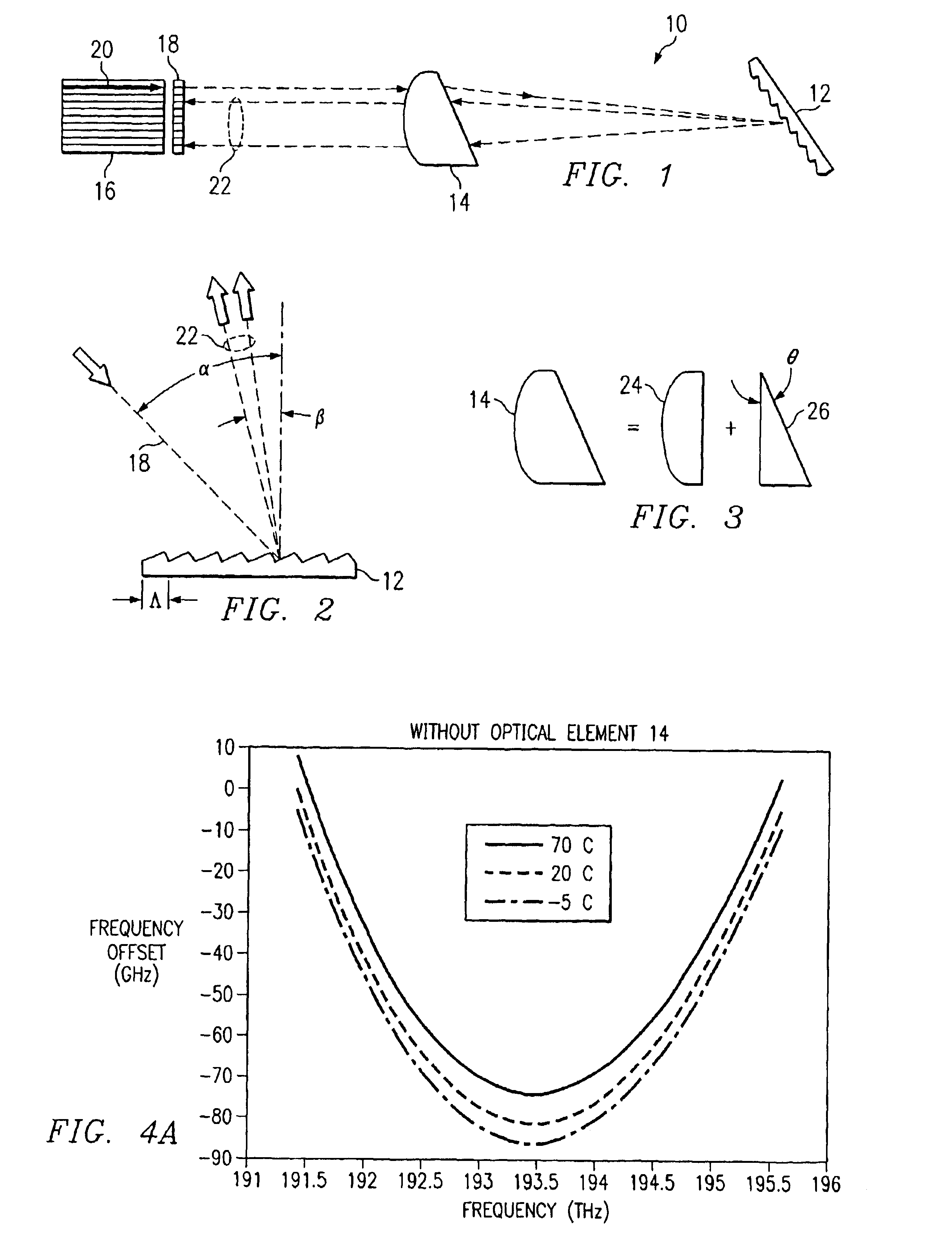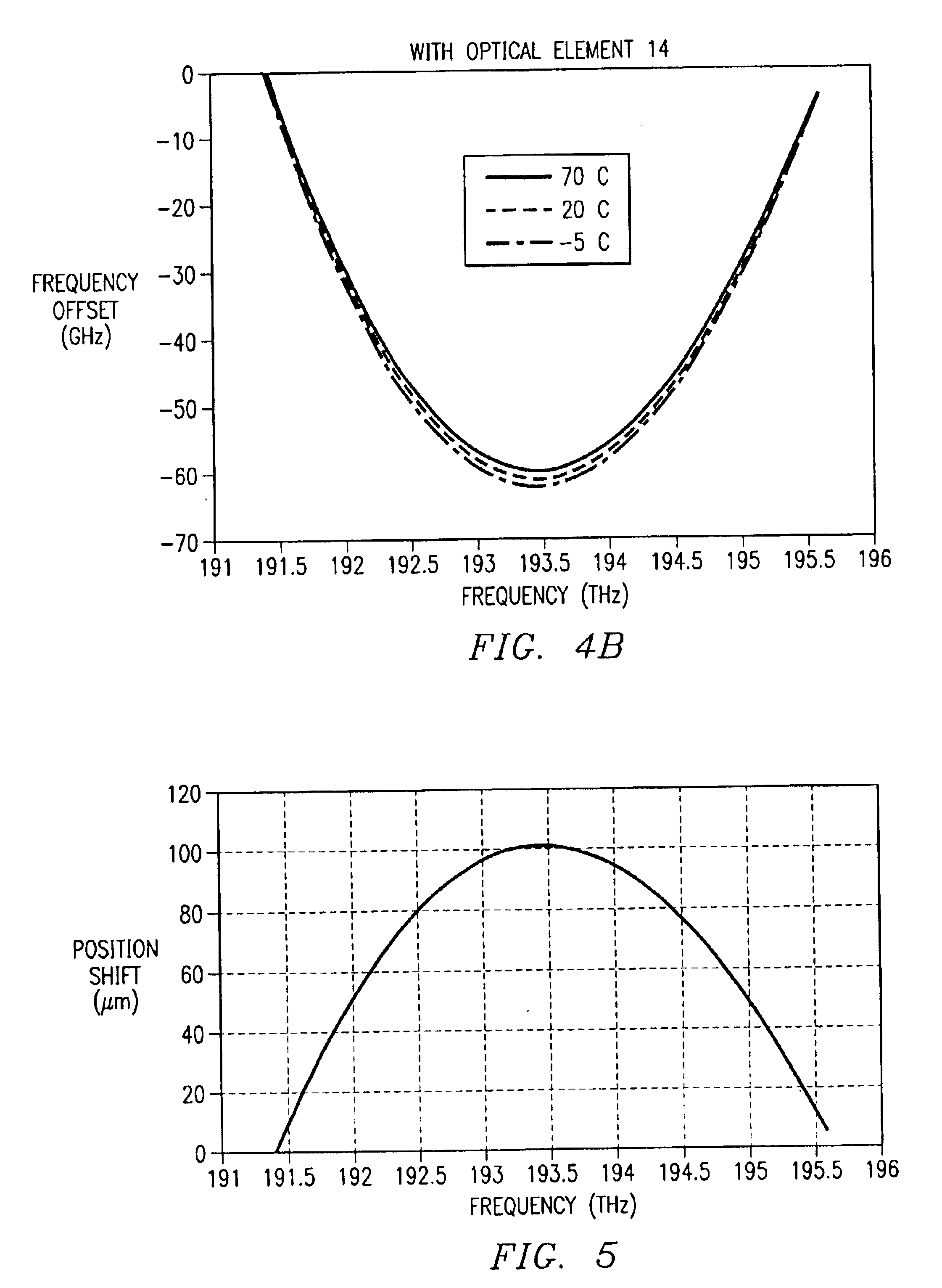System and method for multiplexing and demultiplexing optical signals using diffraction gratings
a technology of optical signals and diffraction gratings, applied in the field of optical communication systems, can solve the problems of limiting the application of bdg devices to its gaussian-shape spectral response, significant loss of that frequency, and typically some frequency drift that will occur, so as to achieve the effect of substantially reducing the disadvantages and eliminating the problems of optical communication systems
- Summary
- Abstract
- Description
- Claims
- Application Information
AI Technical Summary
Benefits of technology
Problems solved by technology
Method used
Image
Examples
Embodiment Construction
FIG. 1 illustrates one embodiment of an optical device 10 that includes a diffraction grating 12, a refractive optical element 14, and a fiber array 16. In some embodiments, device 10 further comprises a lens array 18. In general, device 10 performs a multiplexing function and / or a demultiplexing function upon an optical signal. When performing the multiplexing function, device 10 combines a plurality of spatially separated light beams, each light beam comprising a separate wavelength channel, into a single, more densely spaced wavelength division multiplexed (WDM) optical signal. The multiplexing function of device 10 is described in greater detail below. When performing the demultiplexing function, device 10 separates a WDM optical signal, such as optical signal 20, into a plurality of spatially separated light beams 22, each light beam comprising a separate wavelength channel. Device 10 compensates for temperature fluctuations and non-linear dispersion that may be introduced by t...
PUM
 Login to View More
Login to View More Abstract
Description
Claims
Application Information
 Login to View More
Login to View More - R&D
- Intellectual Property
- Life Sciences
- Materials
- Tech Scout
- Unparalleled Data Quality
- Higher Quality Content
- 60% Fewer Hallucinations
Browse by: Latest US Patents, China's latest patents, Technical Efficacy Thesaurus, Application Domain, Technology Topic, Popular Technical Reports.
© 2025 PatSnap. All rights reserved.Legal|Privacy policy|Modern Slavery Act Transparency Statement|Sitemap|About US| Contact US: help@patsnap.com



